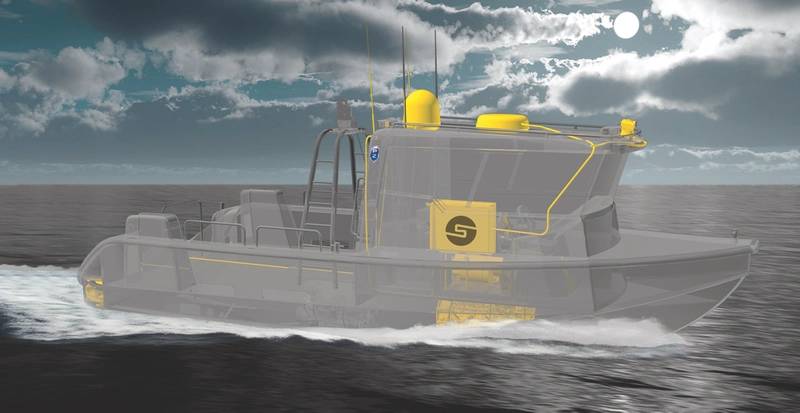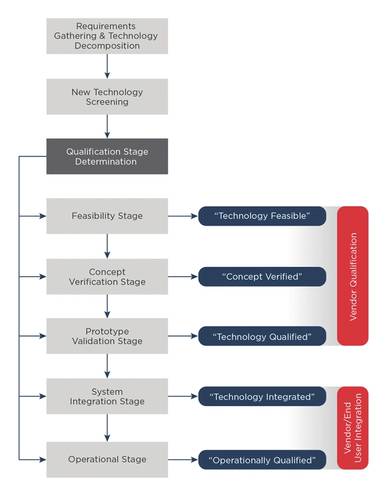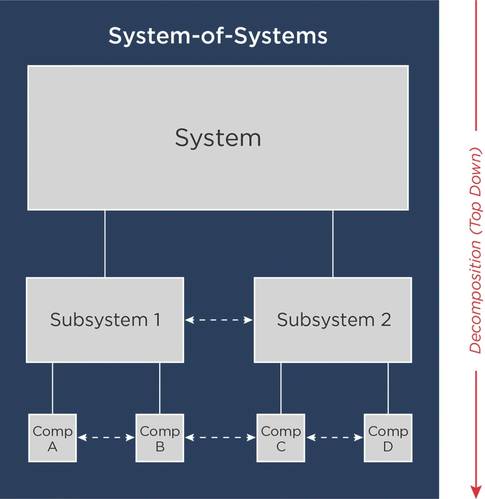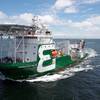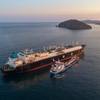ABS weighs in on the way forward for marine autonomous systems and navigation technology.
The era of digitization and hyper-connectivity is taking the maritime industry on a journey as it transitions from ‘smart’ to remotely operated and then, to autonomous vessels. The OSV sector – and offshore workboats in general – may well be leading that transition, with some projections for remote-controlled vessels as soon as next year.
Many new technologies (sensors, navigational systems, instrumentation and artificial intelligence, etc.) are rapidly being introduced, with industry codes and regulations struggling to keep pace. Some new technologies and their intended applications have little precedent, raising concerns about their readiness, maturity and safety implications.
While industry has gained experience in the past two years through autonomous surface vessels supporting simple missions – such as surveys in restricted waters – more complex missions are being envisioned (e.g., oil spill recovery, firefighting, safety standby rescue). These missions will require more advanced control algorithms and intelligence to navigate in open waters, and to work with other manned or unmanned vessels, in human supervised or fully autonomous modes.
More complex systems integration and system-system/human-system interaction will be required to accomplish mission objectives. The security of these cyber-enabled systems will also become a critical issue. While the benefits of autonomous vessels are clear in terms of reductions in human error, reduced exposure of offshore workers to hazards, reduced operating cost and greater design and operational efficiency, there are risks introduced by autonomy itself.
To support early adoption of an autonomous ship concept, owners and regulators will need to build confidence that these new technologies will perform as intended. The potential risks associated with their implementation will need to be systematically reviewed and managed. Following a new technology qualification (NTQ) process can help accomplish this for each step on the route to autonomous Vessels.
Qualifying New Technology
ABS recently introduced the NTQ service to help qualify new technologies by confirming their ability to function in accordance with defined performance requirements. It is based on the qualification approach outlined in the ABS Guidance Notes on Qualifying New Technologies as shown in Figure 1.
Based on the principles of systems engineering, the process encourages a systematic and consistent evaluation of new technologies as they mature from concept through to intended operations. It follows a five-stage process that aligns with the typical product-development phases of a new technology:
- Feasibility
- Concept verification
- Prototype validation
- System integration
- Operational verification/validation
The qualification activities within each stage employ risk assessments and engineering evaluations that build upon each other to determine if the new technology provides acceptable levels of safety in line with current offshore and marine industry practices. The qualification efforts – by all stakeholders, including the vendor, system integrator and end-user – at each stage are detailed in an NTQ plan.
Completion of the qualification activities produces a “statement of maturity,” which attests to the technology’s maturity level and helps to demonstrate progress and readiness to investors, partners or customers. It also helps regulatory agencies to gain confidence that the foreseeable hazards have been systematically reviewed.
When the ‘prototype-validation stage’ is completed, the technology then can be Type Approved to reduce repeated evaluation of identical designs.
Applying NTQ
A new technology is broadly defined as ‘any design (material, component, equipment or system), process or procedure that does not have prior in-service experience, and/or any classification rules, statutory regulations or industry standards that are directly applicable’. The type of ‘novelty’ of a new technology is categorized as follows:
- C1. Design/process/procedures challenging the boundaries of current offshore or marine applications
- C2. Design/process/procedures in new or novel applications
- C3. New or novel design/process/procedures in existing applications
- C4. New or novel design/process/procedures in new or novel applications
The level of effort involved in qualifying new technology increases from C1 through C4. An asset is a novel concept if incorporating new technologies appreciably alters its service scope, functional capability, and/or risk profile because it introduces applications that have not been proven in the marine and offshore industry. A novel concept also can be a system of systems (SoS) that results from integration of independent systems to form a larger system with unique capabilities.
Novel concepts are typically presented to ABS for a review and class approval in accordance with the ABS Guidance Notes on Review and Approval of Novel Concepts. That process and its linkage to the NTQ process are shown in Figure 2.
Gathering Requirements & Technology Decomposition
This step helps to develop a ‘system requirements and description document’ (SRDD) for the novel concept, which defines and sets the baseline requirements for qualification of the SoS and all subsystems or components; the document is intended to be a design-review package rather than a single, consolidated document.
As the design matures through development and more knowledge is gained through qualification, the initial requirements may be subject to change. The SRDD will need to be updated accordingly to include more detailed documents, which, for example, offer functional descriptions and specifications of software designs and requirements. Those requirements can be gathered and defined by following a systems-engineering approach, focusing on:
- Defining goals for the novel concept, or SoS, based on the mission;
- Identifying the functional requirements to meet the goals – including human element considerations;
- Identifying the performance requirements for each functional requirement;
- This process is followed by a top-down system decomposition, wherein the system is divided into subsystems, which are further broken down into components. The typical system hierarchy and decomposition iterations are shown in Figure 3.
This decomposition process achieves the following:
- Mapping the functional requirements of the system to item(s) (e.g., subsystems or components) to identify their ownership;
- Mapping functional requirements to specific performance requirements;
- Confirmation that all defined functional requirements can be addressed by configurable items.
For example, a goal for the autonomous navigation system could be that it is ‘capable of executing its mission in a safe and reliable manner under all foreseeable conditions.’ A functional requirement associated with this goal could be that ‘the system is able to navigate on its own by detecting objects in its path and maneuvering to avoid collisions.’
The key system that contributes to this functional requirement could be the autonomous navigation system; the associated subsystem could be collision avoidance system; with relevant components being the sensors/sensor fusion for situational awareness, such as cameras, RADAR and LIDAR.
Performance requirements are defined at the subsystem or component level. Examples include:
- detection and classification (by type and size) of objects within a certain time frame and distance required to give sufficient time to react;
- execution of collision regulations based on type of object;
- resolution requirement for cameras;
- fault tolerance, failed and degraded state requirements.
Reference can also be made to the approaches used in the IMO’s goal-based standards or the Naval Ship Code.
New Technology Screening
The next step is to identify new technology items and determine where to focus qualification efforts. The previous NTQ novelty categories can be used to estimate the rigor required to qualify each new technology. The assignment of integrity levels will determine the criticality of each item in the system hierarchy based on the potential consequences of a functional or systemic failure.
When the functional requirements and subsystems are reviewed, many of the individual technologies (e.g., sensors, instrumentation, etc.) may have some maturity, but may be being used in a novel application.
The new technologies that will require the most attention are autonomous control systems that use machine learning or artificial intelligence-based algorithms to assess conditions and events, make decisions, or command interfacing systems used for safe operations.
New Technology Stage Determination
The maturity level of the new technology can be determined by the systematic screening process and review of the SRDD, helping to identify the stage at which qualification activities should be initiated.
Qualification Activities
The objective of qualification activities is to verify and validate that the new technology can satisfy performance requirements. Qualification within each stage is comprised of a set of iterative activities that include engineering evaluation and risk assessments as shown in Figure 4. The activities for progressing through each qualification stage are in the NTQ plan.
Risk assessments are the key to identifying the technical risks associated with new technologies. They should target hazards associated with the overall SoS based on the specified mission and new technology at each qualification stage.
Typical activities for engineering evaluation include a review of the engineering design requirements, design verification (through analyses and simulation), validation testing, interface analyses, verification of operability, ability to be inspected and maintained, and a review of the quality-assurance program. The key engineering-evaluation activities for an autonomous-control system include:
- verification of software systems;
- verification and validation of data integrity;
- review and certification of the software provider.
The Path to Classification
The ABS NTQ process is embedded within the class review and approval for novel concepts, helping to make the transition seamless. When all enabling new technologies have obtained a ‘technology feasible’ Statement of Maturity, an Approval In Principle can be issued. The AIP is a key milestone in the class approval process; it attests that the novel concept in this technology complies with the intent of the ABS Rules and Guides. It demonstrates the feasibility of a project with respect to the SoS goals and the concept’s eligibility to be classed.
The future for autonomous shipping is promising despite some significant obstacles in the way, such as the creation of regulatory frameworks and building industry confidence in safety and their mission-ability of the technologies. The NTQ program was developed to support marine and offshore industries during a time of rapid technological change.
The Author
Smarty Mathew John is ABS Manager of Industrial Systems, Subsea, Safety and Risk. Matthew John has held leadership roles in R&D, Operations and Consulting within ABS, including managing Risk-based Services, and Offshore & Subsea Risk & Reliability Applications. He has an MS in Industrial Engineering and a BS in Mechanical Engineering from Texas A&M, and a Subsea Engineering Certification from the University of Houston.
(As published in the December 2017 edition of
Marine News)








